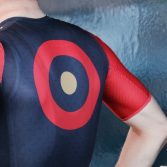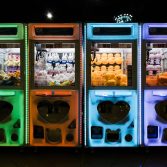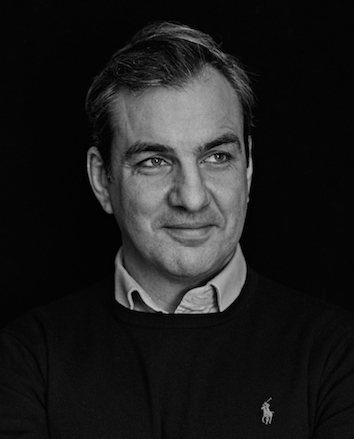Main Content

Adapting to a changing world
By Nick Gray, Founder, Mr Gray Branding
Nokia made rubber boots before entering the world of mobile phones. Shell started life as an importer of shells before diversifying into oil. Nintendo traces its origins back to printed playing cards in the late 19th century.
The need to evolve and adapt is as true for design agencies and business, as it is to the Galapagos Islands’ famous Darwin finches.
The world of design is seeing unprecedented change, much of which is extremely exciting. But for those resistant to change it can feel ominous and threatening.
- We have management consultancies entering the design space. (70 design firms have been acquired since 2004 with around 50% of acquisitions taking place in 2015 and 2016 – Design in Tech Report 2017, John Maeda).
- We have brand-owners bolstering their in-house design and creative strategy teams with the likes of PepsiCo, Mars and M&S becoming sought after destinations.
- We have collectives like Kyu in Japan harnessing the best in the industry to crack the world’s toughest problems.
So, how can design agencies continue to adapt, survive and thrive in today’s changing environment and who can we look to for inspiration?
1. A clear positioning
In an over-supplied market finding a need and delivering a point of difference is vital. Science might call it adaptation, we know it as positioning.
There are those that have adopted hyper-targeted positionings focused on a sector:
Denomination is not just a specialist in drinks, they are specialists in wine. In 2018 the agency won 18 Drinks International Wine Design Challenge Awards (Gold or higher), along with a DBA Design Effectiveness Gold Award. With offices in Sydney, London and San Francisco they are a successful example of a specialist agency.
There are those that position themselves around new ways of working:
Nalla adapted to a changing environment by future-proofing brands for a digital environment. Pre-2010 brand design was mostly static and brand identities were retrofitted to work in a digital space. Nalla’s approach has seen it flourish with 35% YOY growth.
Or those that offer a unique set of skills that transcend change:
Lewis Moberly has honed its skills for 35 years. It has navigated change by staying true to its founding principle: ‘First win the eye, then the heart, then the mind.’ This has seen them step change Johnnie Walker, benchmark Waitrose Cooks and reimagine St Pancras. Award winning work (including a DBA Grand Prix and D&AD Gold) has ensured their continued success.
 Agencies needn’t be afraid of a more targeted positioning.
Agencies needn’t be afraid of a more targeted positioning.
Greater focus often increases the chance of survival. Most advocate this to their clients, but taking the leap themselves can sometimes be daunting and often feels counterintuitive. A dynamic positioning strengthens a design business; I’ll be exploring how agencies achieve this at a DBA breakfast event on 2 April.
2. Harnessing Tech
Can tech replace or replicate the muse of creative thinking? Can machines generate the ideas at the start of the design process? Well, perhaps not replicate them (yet) but certainly support and in some cases augment them.
Discover.ai has pioneered a machine learning tool to develop springboards for brand content, ideation and innovation. They use AI to accelerate human expertise and deliver new thinking and ideas without the time, expense or logistics associated with traditional research processes. A service that is attracting big name brands like Unilever, PepsiCo and Reckitt Benckiser as well as agencies.
In a gram-able world HP SmartStream Designer is stretching the boundaries of a brand’s design assets on pack. Smirnoff worked with design thinker Silas Amos and London based design agency Yarza Twins harnessing HP’s technology to create a limited-edition bottle based on the concept of diversity. The agency creates the framework, the tech creates the variation. Each bottle is unique with millions of variations created at the click of a button. Coke and Absolute have run similar initiatives.
In both cases technology is not replacing the designer or strategist but augmenting their capacity to create more targeted experiences for consumers. Design agencies need to be harnessing and experimenting with the endless possibilities of tech to stay competitive and at the forefront of the industry.
 3. Meaningful content
3. Meaningful content
You must give a little to get a little. Content, thought leadership and out-bound marketing are becoming the life-blood of agencies. They are the new sales-tools. Marketers never liked cold calls and most no longer have a desk phone on which to received them anyway.
Path, Rufus Leonard and Uniform publish thought leadership looking at how brands and businesses can stay ahead in a changing world. Helping clients wrestle with questions relevant to their business and issues like: the future of packaging, digital transformation, the role of sustainability and the scepticism towards authenticity.
FutureBrand has its annual index. A global perception study looking at how future-proofed the world’s leading companies are across a series of attributes. Now in its fourth-year, valuable data is being tracked about consumers changing relationship with brands. It is helping the agency and its clients adapt accordingly. The agency has even created an interactive on-line tool allowing companies not listed to score themselves and compare results against those on the index.
Agencies of all sizes have the right to a point of view and to develop meaningful, well researched content. In today’s world, great content is a powerful new business tool and important to agency survival.
 4. Challengers and problem-solvers
4. Challengers and problem-solvers
Many agencies are built like machines with armies of designers needing to be fed by projects. Projects that fit with a fixed skill base, returning fixed outcomes. But clients are increasingly looking for challengers and problem-solvers. Ones that can help them adapt to a changing world.
During my time at Design Bridge, the agency changed from being heavily skewed towards packaging to focusing more on brands and the broader world they live in. Clients often came with self-diagnosed challenges and it was the team’s role to assess these and offer the best advice. In the case of KFC the client felt a bold revamp of their packaging would drive incremental sales. We pushed back and proposed a different solution: to revamp the instore comms and menu-boards. The results were highly effective, won numerous DBA Design Effectiveness Awards and established a valuable retained account, from which Design Bridge grew a robust comms offer.
Developing good, long-lasting business relationships is about being proactive and solving your clients’ problems. What it’s not about is selling them stuff or avoiding the difficult questions and taking the easy money
And finally, JKR. Once a bastion of logo-led packaging design, they are now as likely to produce witty campaigns, Instagram-able iconography and sophisticated brand movies. Blurring the boundaries between design and comms for big brands like Budweiser to fantastic new faces like Gut Stuff and Hippeas. They’re an exemplar of how to evolve.
The key to adapting is knowing your limitations and either learning new skills or bringing in those that have already mastered them. Many agencies are struggling to keep up with their clients’ need to innovate and adapt. As a senior marketeer of a petrochemicals brand recently told me:
“5 years ago my agencies were training me. Today I train my agencies. Now that can’t be right when I’m also paying them”.
Darwin’s hardy Galapagos finches did well to adapt. But even they are now under threat, from a tiny parasite that eats its young. Will this most resilient of creatures become extinct within the next 50 years as feared? Or will it adapt once more?
Design agencies face their own threats or opportunities (depending on your point of view); don’t put your own agency at risk of extinction – find ways to adapt and flourish.

About: Nick Gray
Nick has over two decades experience advising creatives and brands, so both can thrive in today’s changing world.
He works with creative agencies and individuals on business and growth planning. This includes agency reviews and repositioning, new business strategy, project forecasting, client relationship assessments, team mentoring, ways of working and pitching best-practice.
On the brand side, Nick brings together lean and compatible teams of creative specialists to solve brand challenges for clients. Their approach is agile and multi-disciplined without the overheads of a traditional or large full-service agency.
Nick is an accredited member of the DBA’s Experts Register.
mrgraybrading.com
Image credits:
TETrebbien | Unsplash
Simon Connellan | Unsplash
Joshua Rawson-Harris | Unsplash
Evan Hancock | Unsplash

 Agencies needn’t be afraid of a more targeted positioning.
Agencies needn’t be afraid of a more targeted positioning. 3. Meaningful content
3. Meaningful content 4. Challengers and problem-solvers
4. Challengers and problem-solvers